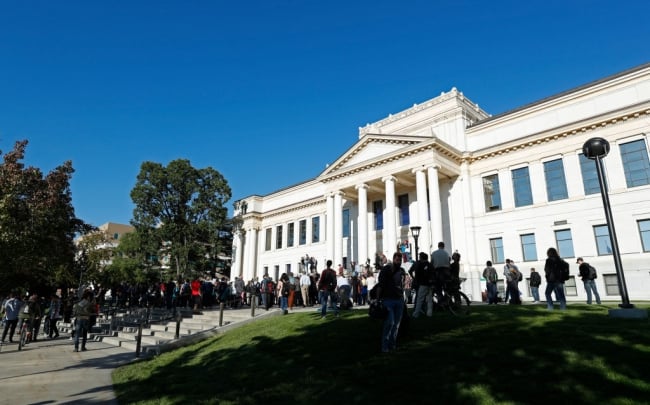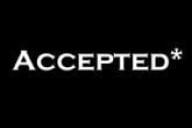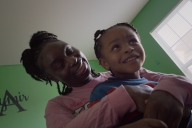You have /5 articles left.
Sign up for a free account or log in.

The University of Utah is shutting down three cultural and resource centers in response to the state’s anti-DEI legislation.
George Frey/Getty Images
Starting today, Utah joins the growing list of states that have implemented a ban on diversity, equity and inclusion programs and practices at colleges and universities.
According to guidance on implementing the new law released by the Utah System of Higher Education, public colleges and universities are required to eliminate any offices, programs or practices that are “discriminatory,” a term that is extensively defined and includes anything that excludes individuals due to their identities. The guidance does not advise colleges to close their cultural centers—spaces on campus dedicated to supporting minority students with specialized resources and opportunities to socialize.
But many institutions are shuttering their cultural centers anyway, following in the footsteps of universities in states that previously passed DEI bans, such as Florida and Texas.
That’s not how many thought the Utah law would be rolled out on college campuses. After Utah’s HB 261 was signed into law in January, Atlantic staff writer Conor Friedersdorf praised it for making “real compromises with DEI supporters,” pointing out that it would allow the University of Utah’s Black Cultural Center to stay open, for instance.
While that is technically true, the center has been reduced to a shadow of its former self. The physical space will remain accessible, but the center’s website has been dismantled and the resources it used to offer are being moved elsewhere, turning it into more of a gathering space than an actual cultural center. And that’s hardly the only instance in the state; five of Utah’s six public universities have confirmed that they will dissolve at least one cultural or resource center as a result of the new law. A spokesperson for the sixth, Utah Valley University, told Inside Higher Ed, “We unfortunately won’t be able to comment on HB 261 at this time.”
Anti-DEI bans have spread across the United States over the past year, including four that went into effect on July 1—in Indiana, Kansas and Wyoming, as well as Utah. And while the laws vary somewhat state by state, most have resulted in a slate of institutions shutting down cultural centers and resource centers, usually in response to a clause outlawing offices that promote certain ideologies related to identity, such as the idea that individuals can be inherently oppressed based on race, ethnicity, gender or sexual orientation.
The decisions to shut down cultural centers have been divisive. Some conservatives have lauded the move, arguing that cultural centers exclude white students and that LGBTQ+ resource centers ostracize cisgender and straight students. But liberals consider the centers important resources that help students of color and LGBTQ+ students succeed and feel a sense of belonging on campus.
Katy Hall, the Republican state representative who sponsored the bill, emphasized in an email to Inside Higher Ed that the legislation did not mandate the closure of those centers, but said she understood why some universities took that step.
“The intention of the law is to promote student success for all students in our schools and universities and ensure any student who needs support and services has them available,” she wrote. “As I understand it, some of the universities have chosen to [close certain student centers] to better meet the goals I just described. I hope that students who benefitted from these centers in the past know that the expectation is that they will still be able to receive the services and support that they need to succeed with their educational goals.”
Utah’s higher education commissioner, Geoff Landward, told Inside Higher Ed that he sees the value of cultural centers and hopes to preserve cultural education on campuses in the long term; in a Salt Lake Tribune article published last week, he said he could imagine the state’s six public universities potentially coming together to create some sort of systemwide multicultural center to fill the gap left behind by the closures.
Still, he views campuses’ decisions to shutter such centers as a prudent approach to implementing the new law; he noted in the Tribune that although the centers aren’t banned now, he expects that legislators will most likely outlaw them in the future. He emphasized that what most offends Utah’s legislators about the cultural centers are their student support offerings—like tutoring, advising or mentoring—which at least appear to be only available to the student demographic the cultural center serves.
“The natural conclusion for people looking at that was—for example, if we’re talking about a Black student union or something like that—‘OK, that’s available to our Black students, and they have resources available there that are not available to other students who don’t identify with that group,’” he said.
Surveys have indicated that students often prefer working with advisers, faculty, mentors and counselors who look like them or share their cultural experiences. Landward said that the state’s Legislature and higher education leaders remain committed to “ensuring that students have access and that students are completing” college—and that they’re aware students of color are often at higher risk of stopping out.
“So, we’re going to be exploring every option and then we’ll just hold that option up to the law and make sure we can find a way to make it work,” he said. “If it can’t, we won’t pursue it, and if we can, we will.”
Although cultural centers are not banned under HB 261, the law does place new restrictions on them. The commission’s guidance requires any new cultural centers to be approved by the state’s higher education board, and existing centers that remain open will go through a similar evaluation by the board to ensure compliance, Landward said.
The guidance distributed by Landward’s office clarifies that any cultural center that continues to operate must be focused solely on “cultural education, celebration, engagement, and awareness to provide opportunities for all students to learn with and from one another” and cannot overlap with student success and support services.
In addition, the new law prohibits universities from mandating DEI trainings and taking official positions on topics such as antiracism and bias. They also must publicly publish the titles and syllabi of all mandatory classes and trainings and develop employee trainings on free speech and personal political activities.
Impact on Campuses
Students, staff and faculty alike have expressed concerns about how the closures will impact minority students on campus. Harry Hawkins, the former director of the University of Utah’s LGBT Resource Center, described a hostile environment for LGBTQ+ students on campus in an article in SLUG Magazine, a Salt Lake City–based publication, even before the implementation of HB 261.
Now he is concerned that the administration’s delay in announcing the changes hasn’t left enough time to plan for the closure of three centers on the University of Utah’s campus: the LGBT Resource Center, the Center for Equity and Student Belonging, and the Women’s Resource Center.
He also criticized campus leaders for failing to take input from him and other top DEI officials in preparing to implement the new law. He said he had proposed ideas such as town halls with students to discuss the applications of HB 261, but none of his ideas were used.
“I was pushing these points and just constantly shut down,” said Hawkins, who was placed on leave shortly after the SLUG Magazine article came out. “I just want to say to our students, ‘I promise, there were many of us who were trying.’”
The university is planning to introduce two new centers—the Center for Student Access and Resources and the Community and Cultural Engagement Center, the latter of which will require the state higher education board’s approval—to take over the duties of the resource centers. However, Hawkins is unsure if the scholarships distributed through the LGBT Resource Center will continue to be offered—and, if so, whether they will maintain their previous form, which involved significant coaching and mentorship from the center’s staff.
“We would work with our recipients, and you could see the effects immediately. The students, you could tell, were having a great experience,” he said. “I don’t know, with the new model, if that’s what they’re going to do.”
‘Saddened Over This Change’
Similar questions hang in the air at Utah Tech University, which is shuttering its Center for Inclusion and Belonging. The center was home to numerous cultural, identity-based student organizations and offered scholarships for the presidents of those clubs; the clubs will still be around next year, as student organizations are exempt from HB 261, but it’s unclear how their operations might change without the CIB’s support.
Mike Nelson, the director of the CIB, said in an interview that he is moving to a new role focused on student government, organizations and engagement, where he will be able to help clubs lead events and fill the void left behind by the CIB.
“We have over 85 different clubs, so this variety of student clubs now will be the ones that are leading the different types of events and things like that for their peers,” he said.
While he believes moving him into a new role is a reasonable solution, he noted, “We are saddened over this change. There’s a lot of students that, during their time here, have found their place and their home [at the CIB], and that definitely is one of those things that’s just heartbreaking.”
Juan Alvarez, a sophomore and the president of the university’s Latinx Student Alliance, is one such student. Though he has worked closely with the CIB, he was unaware of the planned changes until just a few weeks ago.
Alvarez noted that he understands why some cultural programs and offices can seem exclusionary, but that’s never how the CIB or his club functioned in practice. He said he always tried to get as many students as possible to attend the LSA events he hosted, such as film screenings and game nights where participants learned to play lotería, a Mexican board game.
“I literally told everybody that they were invited. Even though they say ‘Latino organization,’ everybody was welcome to be there. I always say, it doesn’t matter who you are, you always belong,” he said. “And so I feel like it was like the [legislators] … needed a little bit more research, honestly; go to the universities to see what was going on, actually, instead of just making a decision.”
As the club’s president, he used to go to the CIB whenever he needed assistance planning events or helping members of his club access resources. Now it’s not clear where he—or the club’s future president, as he is considering stepping down from the position next year—will turn for support.
Elsewhere in the state, Southern Utah University is dissolving its Center for Diversity and Inclusion and the Q Center, an LGBTQ+ resource center. On a frequently asked questions webpage addressing the changes, the institution noted that clubs affiliated with the CDI can become independent student organizations or university-sponsored clubs, which requires an academic department to sponsor them.
Utah State University will shutter its Inclusion Center and move the programs within it, including student organizations, to the existing Academic Enterprise office. In contrast, USU also plans to maintain its existing Latinx Cultural Center and proceed with the creation of a Native American Cultural Center, assuming the state higher education board approves both.
Weber State University has closed its Division of Equity, Diversity & Inclusion, which contained the LGBTQ+ Center and five cultural centers that existed under the heading of Centers for Belonging and Cultural Engagement. It will open a new Student Success Center, where most of the personnel from the division of EDI will move.
“Though it’s a significant change, some things will remain the same, like Weber State’s commitment to making sure every student can succeed at the university,” a Weber State spokesperson wrote in an emailed statement to Inside Higher Ed. “Everyone comes to campus with different experiences, skills and challenges, and the Student Success Center will strive to identify students’ unique needs and help them reach their goals. This is something Weber State has long been known for—building personal connections with students and having a genuine commitment to their success.”








